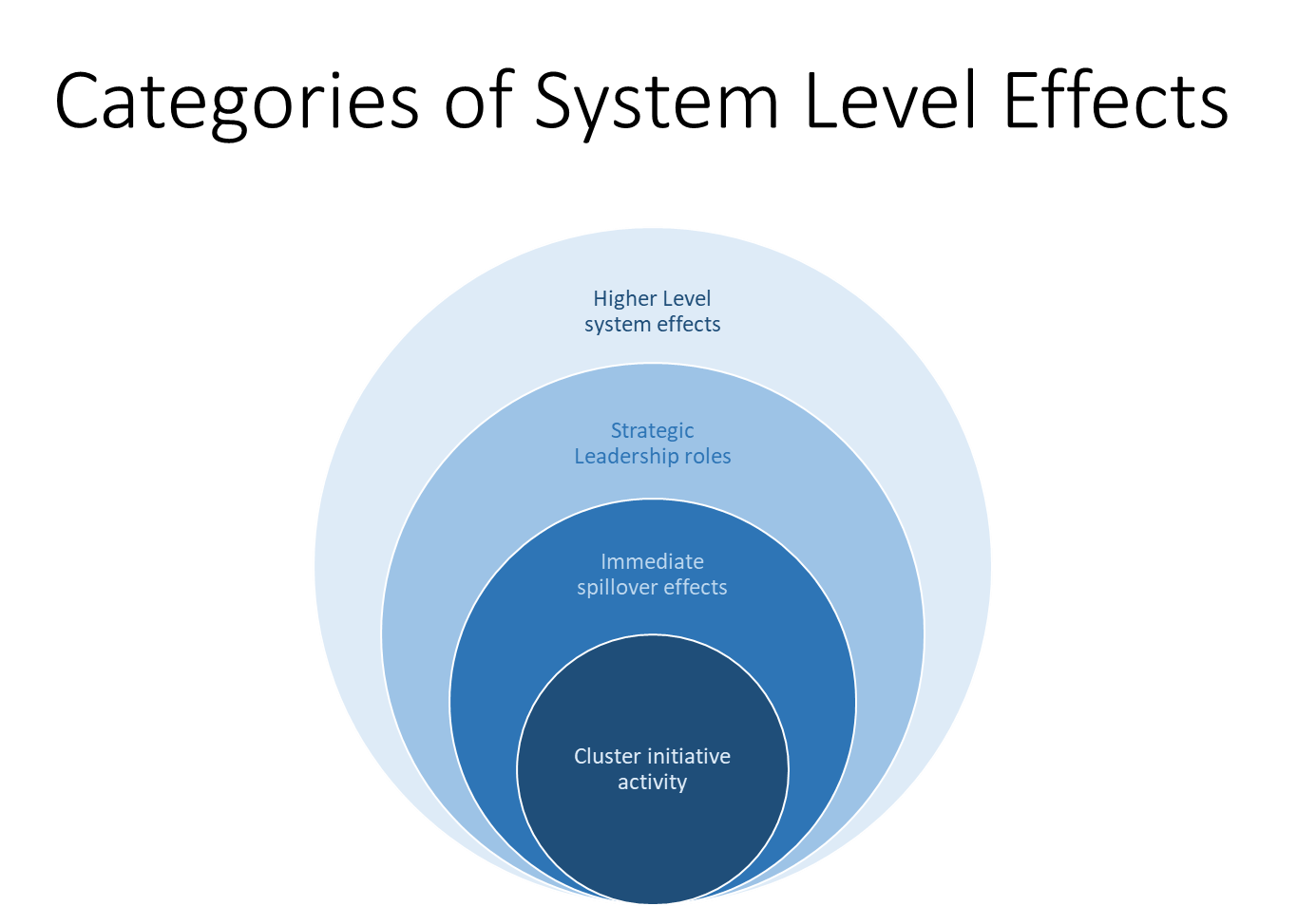Introduction
This workshop will focus on evidencing the wider impact of clusters, exploring how policy makers and practitioners are capturing the system level effects, and showing the value of clusters beyond economic competitiveness.

However, although we have discussed “system level effects” before at the CEWG, what we mean by that is less clear, and how we capture the contribution of clusters is even more uncertain.
A lot of our focus from the Cluster Evaluation Working group has been on how to better evidence the value of cluster activity, through the outcomes of the projects that cluster initiatives deliver, and from the added value of collaboration – what can we do together that we cannot do alone?
More recent discussions also include an acknowledgement that cluster initiatives do not operate in isolation and have a role to play within a broader system. Increasingly that role has become more explicit, and this discussion aims to unpick how cluster initiatives themselves are evidencing that broader value.
In an effort to start to bring some definition to the concept, this survey and the short presentations in the workshop will frame the discussion around different categories of system level effects, and attempt an initial definition of those categories.

Immediate Spillover effects:
Whereas the activities of a cluster initiative are predominantly focused on the needs and priorities of its members, from a system level point of view there will be some wider spillover effects into the broader environment, and most immediately into the natural cluster beyond members. This might include knowledge development and dissemination, provision of cluster-specific physical infrastructure or attracting investment or new entrants into the sector (start-ups or FDI). A cluster initiative’s activities (often) contribute to these types of immediate spillovers – improving the competitiveness and international attractiveness of the innovation ecosystem. This is a system level consequence (and often part of the strategic ambition) of the cluster initiative’s activities.
Strategic Leadership effects:
As a cluster initiative matures and builds confidence, critical mass and capacity to drive more complex collaborative action, it may start to adopt a leadership role within the territory (or domain). This can manifest itself through being the voice of industry, influencing policy and strategy, amplifying the reputation and position of the sector and/or territory, and connecting with other system leaders in new strategic partnerships. When cluster initiatives take on such strategic leadership roles, they contribute to the increased effectiveness (of the structures, policies and institutional arrangements) of the innovation ecosystem. These types of system level effects are less concrete than the traditional factor conditions included in the previous category.
Higher Level System Effects:
Through its (increasingly ambitious and system-targeted) activities and its role as a system leader, a cluster initiative could also make some other (potentially unintended) higher-level contributions to broader priorities of importance to the territory. This could be around environmental impacts, issues to promote equality and diversity or social inclusion, or overall cultural vibrancy and wellbeing agendas. Causality from cluster initiative activity is “mission impossible”, but increasingly clusters are being asked how they can contribute to these wider elements of system success.
The following survey attempts to capture what clusters understand with their role in the system, and how, if at all, they are evidencing their contribution. Please complete the survey with your experience here (you can choose more than one answer to all the questions).




